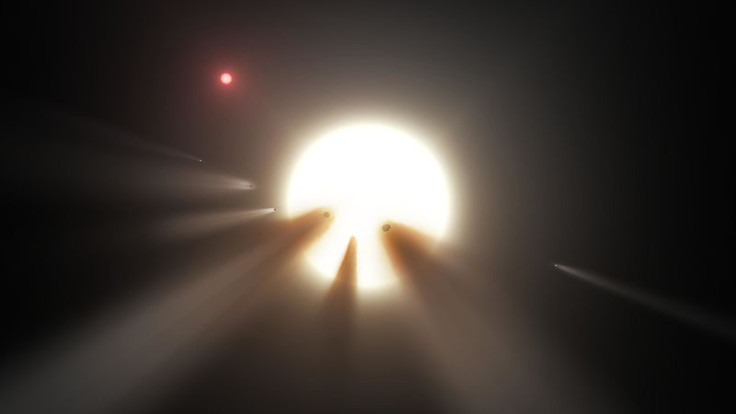KIC 846852's mystery dimming down to natural, internal workings of star itself
Changes in luminosity consistent with 'avalanche model' where smaller dips precede larger ones.

The mystery dimming of KIC 846852 that has baffled scientists for the last 18 months may be down to the star itself – not external influences like a cloud of comets or an 'alien megastructure' that have been proposed.
Dips in the stars light were noticed by citizen astronomers in data from Nasa's Kepler. Analysis showed the amount of light coming from the star would dip at random intervals and at varying amounts. For example, at one point 20% of the star's light was being blocked. This is a huge amount – a planet the size of Jupiter would block around 2% of the light from the Sun, for example.
A number of theories as to what could be causing the dips have been proposed. The most plausible appears to be that it is huge swarm of comets or a massive disk of dust passing by the star – but both of these come with problems.
Now, scientists from the University of Illinois have put forward a new theory. Published in Physical Review Letters, they applied a statistical analysis to the smaller irregular dips in light. Their findings showed the patterns were consistent with an avalanche model – where the smaller dips added up equate to the big dips seen.
Study author Mohammed Sheikh explained: "Once the light curve drops below the threshold, we consider such an event the start of an avalanche. While the light curve remains below the threshold the avalanche continues, and it stops when it increases again to a value above the threshold."
Their findings suggest the dimming could be intrinsic to the star – and that the dips could represent a point in a phase transition.
Richard Weaver, another study author, said: "As more data is being analysed we hope it will be possible to identify exactly what type of transition this is. We don't have a deep enough understanding to get a definitive answer, and more observations are required. We can only speculate on what such a transition would be.
"It's important to note – lack of periodicity alone is not enough to rule out occultation. That's part of the reason why theories such as comets or planetary debris are so popular. We can't definitely rule out these things with our findings, but we can say that the power laws we have obtained are more consistent with intrinsic variation."
© Copyright IBTimes 2025. All rights reserved.






















